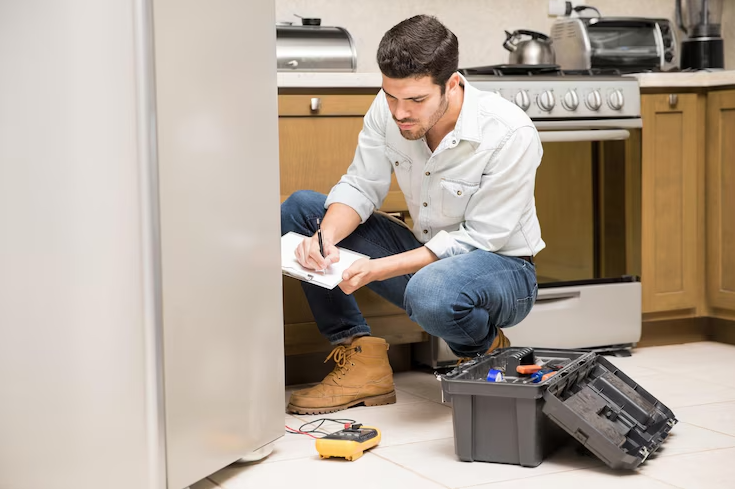Dealing with a fridge leaking water inside can be frustrating and messy. If you notice puddles forming inside your refrigerator, it’s a sign that something isn’t quite right. Whether it’s a minor drip or a steady flow, understanding the root cause and how to fix it is essential to avoid food spoilage and damage to your appliance. If you’re struggling with fixing fridge water leaks, this guide will walk you through common causes and practical solutions to get your fridge back to perfect working order.
Why Is Your Fridge Leaking Water Inside?
A fridge leaking water inside usually points to a problem in its drainage or cooling system. Modern refrigerators are designed to handle condensation by collecting excess moisture and directing it to a drain pan under the fridge. However, when this process is disrupted, water begins pooling inside.
Common reasons include:
- Clogged or Frozen Drain Hole: The drain hole at the back of the fridge is responsible for channeling excess water to the drip pan. If this drain gets clogged with food particles or ice, water spills inside.
- Damaged Door Seal: A faulty or dirty door gasket can cause warm air to enter, increasing condensation that your fridge cannot handle properly.
- Improper Temperature Settings: Too cold or too warm settings can cause excess frost or condensation, leading to leaks.
- Blocked or Full Drain Pan: The pan under the fridge collects the water that drains from inside. If it’s full or misaligned, water can leak outside or inside.
How to Fix Fridge Water Leaks: Step-by-Step Guide
1. Clear the Drain Hole and Tube
Start by locating the drain hole, usually found at the back or bottom inside the fridge. Use warm water and a pipe cleaner or turkey baster to flush out any debris or ice blocking the hole. This simple step often solves the problem quickly.
2. Inspect and Clean the Door Seals
Check the rubber seals around the door for cracks, tears, or dirt buildup. Clean them with warm soapy water and a soft cloth. If seals are damaged, consider replacing them to ensure the door closes tightly, reducing moisture buildup.
3. Check the Temperature Settings
Refrigerators typically work best between 37°F and 40°F (3°C to 4°C). If the fridge is too cold, it may cause ice buildup, and if too warm, it may cause excess condensation. Adjust settings accordingly.
4. Empty and Clean the Drain Pan
Pull out the drain pan located beneath the fridge and empty any standing water. Clean the pan with warm soapy water and dry it thoroughly before placing it back.
When to Call a Professional
If you’ve tried all the above and your fridge is still leaking, it might be time to seek expert help. Refrigerators are complex appliances, and leaks can sometimes be caused by issues like a broken defrost system or malfunctioning water inlet valve. For detailed guidance on fridge leaking water inside, you can visit this helpful resource: fridge leaking water inside.

Prevention Tips to Avoid Future Leaks
- Regularly clean the drain hole and drip pan every few months.
- Ensure the fridge door seals are intact and clean.
- Avoid overloading your fridge, which can block air vents and cause uneven cooling.
- Keep the temperature within recommended levels.
- Defrost manually if your fridge doesn’t have an auto-defrost feature.
Conclusion:
Fixing fridge water leaks isn’t always complicated but requires a bit of attention to detail. By understanding the causes and following straightforward maintenance steps, you can keep your fridge dry and functioning properly. Remember, if the problem persists, it’s best to call a professional to avoid further damage. With a little care, your refrigerator will continue preserving your food fresh and your kitchen mess-free!

